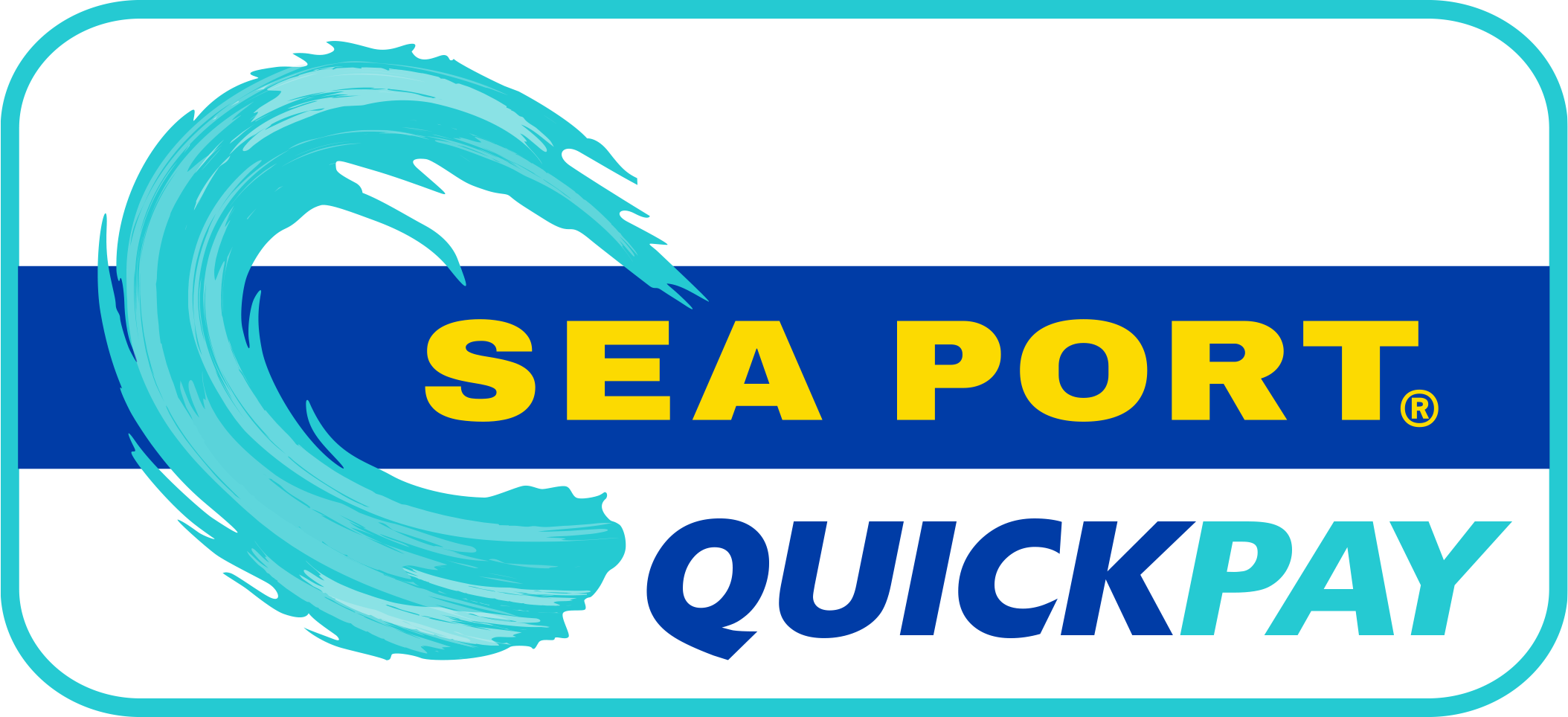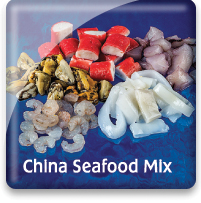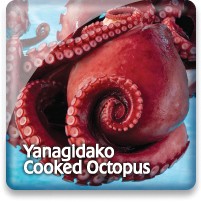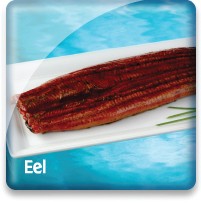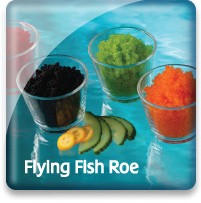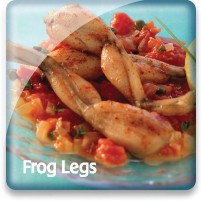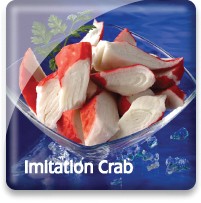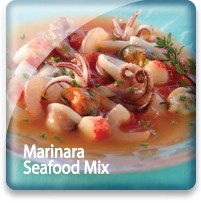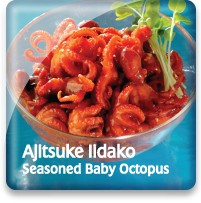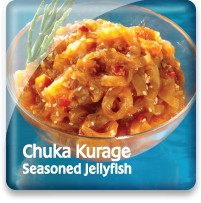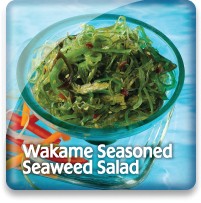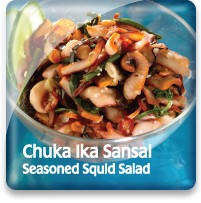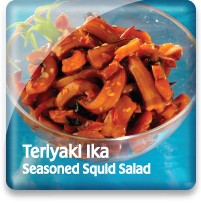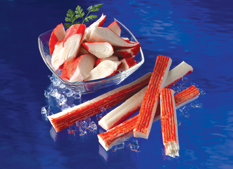
Imitation Crab

Market Name: Eating QualitiesSurimi seafood is a versatile, pre-cooked product with a mild, sweet flavor. It is a great seafood replacement for products such as shrimp, crab, and lobster. A ready-to-serve product, surimi seafood is also a popular choice in many sushi restaurants. Additionally surimi seafood is a major ingredient used by sandwich and salad manufacturers.
Threadfin bream derive their name from the colorful thread extending from the top of the tail.
|
Description & CharacteristicsImitation Crab Flakes and Sticks are made with fish based Surimi. Surimi meaning “ground meat” in Japanese, is made from lean, white-fleshed fish. The Japanese have been using surimi-based products for over 800 years. Large-scale production of surimi was developed in Japan in the mid 1900’s. The white, mild flavored fish are ground and processed leaving only a protein based pate (myofibrillar proteins) that is rubbery and firm when cooked. The original flavors and oils of fish are removed, which allows for surimi to be used as a base for many different imitation seafood items. Various ingredients are used to provide the taste of product that is a cooked, frozen, ready to eat seafood item! In 2006 FDA approved the use of the following description of surimi based products: Flavored Seafood Made with Surimi; A Fully Cooked Fish Protein! The majority of surimi worldwide is made from Alaska pollock, Pacific whiting, and to a lesser extent, threadfin bream from Asia. Sea Port currently uses threadfin bream surimi in its imitation crab meat products. In the Alaska pollock fishery surimi is made aboard catcher/processors in the North Pacific and also at shore-based processing facilities. Other species that are used in surimi seafood worldwide include other whitefish, such as Southern blue whiting, Northern blue whiting, South American hake; and small tropical species, such big eye snapper and lizardfish. The first step in making surimi seafood is the production of surimi, the fish protein paste that serves as a main ingredient in the finished product. To make surimi, fish fillets and trim pieces are minced, then washed and refined through a mechanical process to remove everything but the protein. Then cryoprotectants are added and the surimi is frozen. To make surimi seafood, the surimi is mixed with salt, sugar, starches and flavorings, then formed into a variety of shapes and cooked. At this point, the product is packaged and pasteurized and can be shipped chilled or frozen.Surimi seafood is available in a wide variety of products in the United States, including those textured and flavored to resemble crab, scallop, shrimp, and lobster. The bulk of the market in the U.S. is crab-flavored products, which include flake, chunk, leg and shred styles. The crab-flavored products may or may not include crabmeat in the ingredients. In Japan, surimi seafood is available in a variety of forms and is cooked in several ways: steamed it is called kamaboko (which is also a general description for surimi seafood); broiled products are called chikuwa; and fried versions are called agemono.
Other Resources |
Handling Instructions for Imitation Crab
Imitation crab meat should be stored at or below 0°F (-18°C) and then thawed properly when ready to consume as a fully cooked product. The frozen shelf life of our imitation crab meat is 24 months.
Links to proper seafood handling instructions: NOAA - Fish Watch: Handling Seafood and A Consumer Guide to Safe Seafood Handling.
Thawing Imitation Crab
Our Imitation crab meat is frozen in pasteurized vacuum packs. Because of this pasteurization the vacuum packages can be simply placed unopened under proper refrigeration (33-39°F) for 12-24 hours or until completely thawed. For quick thawing, the sealed vacuum packages can be placed in a cold tub of water and completely thawed within 20-60 minutes. As long as the vacuum seals have not been broken our imitation crab meat can be safely refrigerated (33-39°F) for up to 60 days. Once the vacuum seals have been broken, the imitation crab meat must be treated as any other fresh cooked seafood and consumed within 3-5 days.
Important Instructions for Imitation Crab
Consuming imitation crab meat immediately after breaking the vacuum seal on thawed product yields the best quality.
The Federal Food, Drug and Cosmetic Act now requires that all foods that are not raw agricultural commodities and that contain a major food allergen be labeled to clearly identify the name of the food source form which the allergen is derived. (21 CFR U.S.C. 343(w)(1)). The act defines eight foods, and any ingredients derived from these foods as major food allergens: Fish, Crustacean Shellfish, Milk, Eggs, Tree Nuts, Peanuts, Wheat & Soybeans. The name of the food source that must be listed on the label for fish or crustacean shellfish must be the specific type of fish or crustacean shellfish. The market names of species of fish and crustacean shellfish should be used to identify the food source of these two major food allergens. If you intend to re-pack these seafood products, be sure the allergen is declared in either one of two ways:
1) Within the list of ingredients
or
2) In a separate “Contains” statement immediately after or adjacent to the list of ingredients.
Consult the Fish and Fishery Products Hazards and Controls Guidance, Fourth Edition, Chapter 19 for more detailed information on the labeling of food allergens.
Cooking Tips
Imitation crab meat is precooked and can be consumed chilled or in various heated preparations. Links to Imitation crab meat recipes.
China
With more than 1.3 billion people, China is today the world’s most populous country. With a growing economy fueling an appetite for seafood, China has begun importing seafood for in-country consumption, as well as exporting a great deal of its production. In fact, since 2002, China has continued to export more fish and fishery products than any other country in the world, with Japan, the United States, and the Republic of Korea as its main export markets.
Chinese distant water fishing activities started in 1985 when China gained access to new fishing grounds through agreements with foreign countries. China operates vessels in West Africa, the North Pacific, and tuna longline vessels in the South Pacific. In addition, squid are harvested in the Japan Sea and the North Pacific under Chinese-flagged vessels.
Carp are also commercially important, as are bream, shad, eel, cat fish, rainbow trout, salmon, whitebait, mullet, mandarin fish, perch, sturgeon, murrel and pangolin. Commercial shellfish include freshwater shrimp and river crabs, molluscs such as mussels, clams and freshwater snails.
With one-fifth of the world’s population, and an official government policy to promote aquaculture, China has today become an aquaculture powerhouse, now producing more than two-thirds of the world’s aquaculture species. Fish and shellfish are grown in freshwater as well as the marine environment, including rivers, estuaries, inland lakes, ponds, and the sea.
Go Blue! Seafood Sustainability Spectrum*Click here for an explanation of our Sustainability Spectrum 
Sustainability AssessmentThreadfin Bream is the second most used species for surimi behind Alaska pollock which is use to make Imitation Crab. Sea Port’s Imitation Crab Meat’s main ingredient is Threadfin Bream surimi. Threadfin Bream is typically caught by bottom trawl, a fishing method known to negatively impact sea floor habitats. China is the largest producer of Threadfin Bream and Thailand is another major source.While fish management is well established in China, it is unclear how threadfin quotas are set or managed (restricting entry into certain fisheries is a management measure used by China, although it is unclear if these controls are in place in the threadfin fishery). There are also overall questions regarding the management and sustainability of Chinese fisheries, given that landings in most fisheries have increased dramatically over the past 10-15 years. Most major fishery resources are currently in a depleted state in waters surrounding Thailand, and it stands to reason that threadfin bream populations are not excluded. Overfishing, coupled with environmental degradation, has been cited as a major contributor to the current situation. Fishery managers have encountered difficulties stemming from lack of adequate resources and enforcement. However, there are multi-national efforts underway to improve the ecological health of the Gulf of Thailand and South China Sea. These efforts may provide a mechanism or model for future engagement in the threadfin and other fisheries in Thailand. Based on life history characteristics (such as gaining sexual maturity at an early age and having a large number of offspring), Threadfin Bream should be fairly resilient to moderate levels of fishing pressure. This may aid in recovery efforts where stocks are depleted.
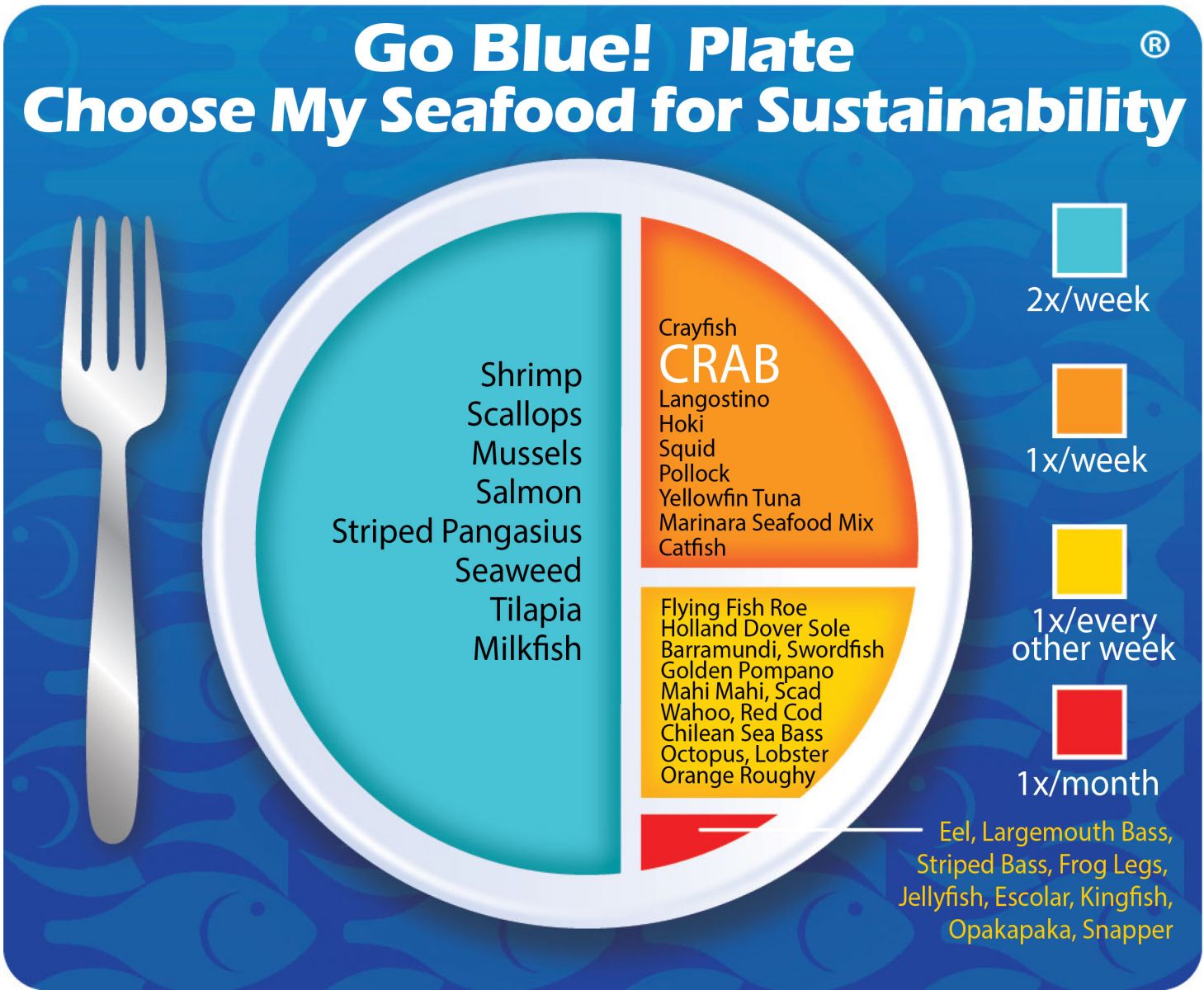
Environmental Impact: ModerateThere is a Lack of effective management leading to overfishing and depleted populations. Because Threadfin Bream is primarily landed by bottom trawls, habitat impacts are also of concern.
Sustainability Improvements NeededImproved data collection and implementation of specific fisheries management regulations (for example: quotas, gear restrictions, seasonal or area restrictions) are needed. Fisheries should encourage the use of modifications to bottom trawls to limit bycatch and habitat impacts.
Actions that Sea Port is UndertakingSea Port is continuing to import Threadfin Beam based Imitation Crab meat from China because of threadfin bream’s resiliency to overfishing and the existence of fishery improvement efforts that are underway for the entirety of the Gulf of Thailand and South China Sea where the majority of threadfin is being caught. Sea Port believes that the utilization of Threadfin Bream for making their highly popular Imitation Crab maximizes the efficient use of this resource. Sea Port also believes that the availability of this affordable healthy crab substitute has decreased the fishing pressure on real crab stocks. Sea Port believes that, in aggregate, choosing from a diverse variety of seafood is better for sustaining the world’s seafood resources and that Imitation Crab should be a part of this variety.
We created the sustainability assessments for each of our seafood items in order to reveal the existing and potential environmental impacts and risks that are associated with producing them for human consumption. This allowed us to establish the starting position for each of our seafood items along our progressive Go Blue! Seafood Sustainability Spectrum®. These assessments are only a single snapshot in time and because of this, we will continue to assess and update the critical sustainability needs associated with our supply sources and issue updates to the Go Blue! Seafood Sustainability Spectrum® as needed. There is a growing global awareness for the need to assure the sustainability of farmed and wild caught seafood and because of this; all around the world positive changes are rapidly occurring at all levels of the seafood supply chain. We will continue to spread this growing awareness and work with our many industry partners to improve the sustainability of all seafood, which we believe is the ideal protein of choice to feed an ever growing world population. Our Go Blue! Seafood Sustainability Spectrum® serves as our compass and yardstick as we strive to move all our products forward to becoming more sustainable. Please join us in this committed quest and Catch Our Wave® to sustainability by choosing a diverse variety of responsibly produced seafood as part of your diet.
|

